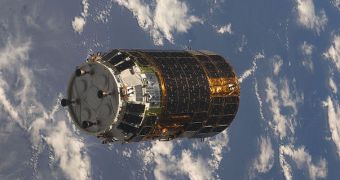Though the International Space Station (ISS) is at this point only 86 percent complete, and scheduled to be finished by next September, current plans are to decommission it no later than 2015. This is the initial time frame that countries involved in the project signed up for, so a new set of meetings needs to take place to cover the new developments. It would be a shame that, after some 11 years in the making, the orbital facility would only operate at full capacity for about five years, before being dismantled. There is, however, hope that the project will endure at least until 2020, Space reports.
The current NASA budget, for example, is slated to provide funding for the ISS until 2015, but the review panel that analyzed the state of Project Constellation has made an informal recommendation to the White House, to continue funding the space facility until at least 2020. “The Augustine commission made that recommendation, so we're waiting for our government as well as the governments of the other agencies, who have a great interest in seeing the extension of the International Space Station program, to get maximum use of their modules extended beyond 2015,” the station's lead scientist, NASA expert John Uri, explains.
One of the greatest challenges that would hinder the prolonging of the current schedule is logistics. All space agencies currently involved in the project – and that can at least supply an unmanned cargo ship – have their own national schedules to keep. Russia, for example, has its Progress-capsule production planned for years ahead, so a clear decision on the faith of the ISS will have to be made no later than next year. JAXA, the Japanese space agency, now has the H-II Transfer Vehicle (HTV), which also needs to have a very accurate production schedule for the next few years.
“It's clear from the Augustine commission that they want the station extended beyond 2015. That would require more logistics services for ISS,” the ESA space station Program Manager, Bernardo Patti, says. He reveals that the European Space Agency has already planned four more flights until 2015, in which its Automated Transfer Vehicles (ATV) will deliver supplies and equipment to the station in orbit. “We may have more [ATV] after that. It just depends on how long the station is operating and its needs,” he adds.
“We hope to increase the budget for the researchers and also the H-2B and HTV for the future of our space missions. Right now, we are discussing in the Japanese government about the future plan of our next generation for future exploration and also the ISS extension,” JAXA Houston office Deputy Director Naoki Nagai says. At this point, there seems to be a willingness of all those involved in the project to continue it. It remains to be seen if meetings next year will come up with an extension program, and how many years that will cover.

 14 DAY TRIAL //
14 DAY TRIAL //